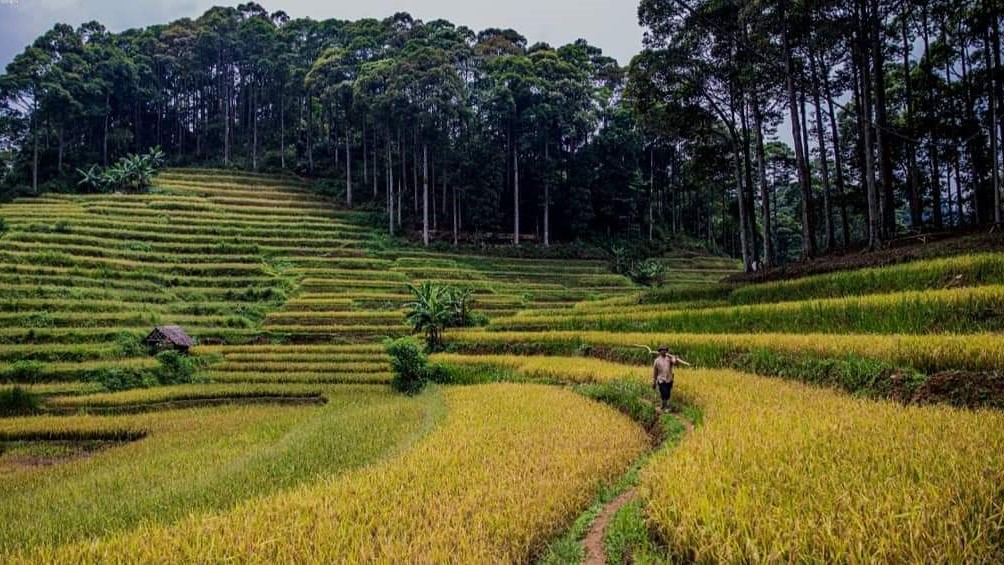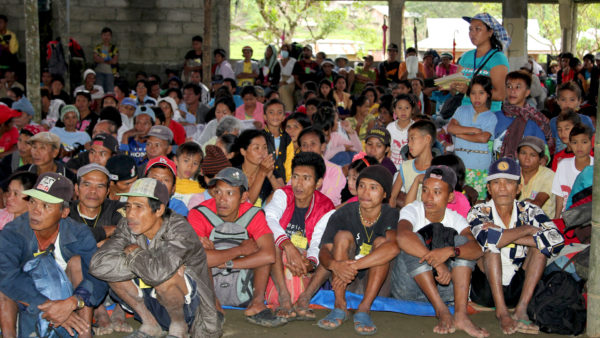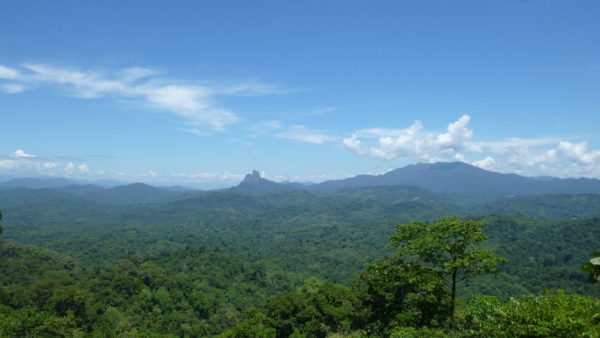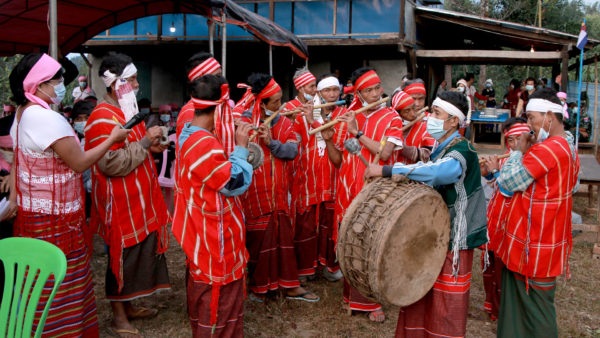The Kasepuhan Karang community believes that Mount Kendeng and the forest area surrounding it has been entrusted to their community by their ancestors, with the current generation inheriting a duty and obligation to maintain and manage the land sustainably
First published on 09/12/2023, and last updated on 11/13/2023
By Cindy Julianty[1], Working Group on ICCAs in Indonesia
Note: This article is from the recently published report “Celebrating territories of life in Southeast Asia.” The text has been edited for the ICCA Consortium website.
The Kasepuhan Karang community is believed to have existed since the Dutch colonial era, shifting location several times before settling in Kampung Karang in the village of Jagaraksa, Lebak District, Banten Province. The community consists of descendants of the Bongbang, the royal troops charged with establishing villages in rural areas. Bongbang also refers to Anu Ngaratuan, the title of a queen, and the people in “the Queen’s land” are referred to as bobojong Bongbang. They believe they have been tasked to guard the sacred sites known as kosala, with the responsibility passed down to them by their anu ditipekeun (ancestors). Those who adhere to the body of customary law of the community are referred to as incuputu. There are also other incuputu in other places throughout the district, but latest estimates only total to about 450 individuals. This is based on the number of participants in the seren taun (ritual harvest festival), attendance to which is mandatory for all incuputu. The purpose of the ritual is “Nyoreang alam katukang, nyawang anu bakal dating,” or to reflect on life’s journey, from the past to prepare for the future.
Kasepuhan Karang is governed by customary institutions, led by customary leaders known as Kokolot or Olot, assisted by officials known as Baris Kolot. These officials include a deputy who represents the community in its dealings with outsiders, an official who maintains order and enforce customary laws, a team of guards to patrol the village and protect the imah gede (traditional houses), an amil to instruct and guide for spiritual affairs, the mabeurang or women who play a special role in assisting birthing mothers and someone who conducts and oversees circumcisions, and someone who manages guests participating in traditional community events.
“Gunung kayuan, lamping awian, lebak sawahan, datar imahan.” Trees on the mountains, bamboo on the slopes, rice in the fields, houses on the flat lands. This is a proverb that serves as a guide for the management of the natural resources and the customary lands of the Kasepuhan Karang community, with the use of the land determined by its contours and inclines. They also maintain a code of rules known as Tatali Paranti Karuhun, which has been passed down from their ancestors. This code includes a mandate for the protection of land containing sacred water springs, and the land surrounding the springs is used as a burial ground for departed members of the community. In these areas, community members are strictly forbidden from cutting down trees or collecting wood.
There are seven zones according to the Kasepuhan Karang customary land zoning system, which defines all lands according to the purpose for which they may be used. Areas with springs are regarded as sacred and are under strict protection. There are forested lands where trees should not be cut, foothills which may be used for rice fields, hilly land for planting of vegetation to prevent landslides, areas to construct ponds and small reservoirs to store water, and an area for cultivating vegetables and for settlements. The flat areas can be used for constructing houses for the members of the community.
There have been conflicts between the state and the Indigenous People of the Kasepuhan Karang community in the management and control of customary lands since the Dutch government declared the forested area around Mount Halimun Salak as a protected forest between 1924-1934. Since then, a number of restrictions have been placed on the community’s access to these forest areas. Following Indonesia’s Independence in 1963, the Forestry Bureau amended the status of the protected forest to that of nature reserve. In 1978, the state forestry company, Perum Perhutani, was granted rights to use sections of the nature reserve as production forest. Several decades later, in 2003, the status of this land reverted to conservation forest, when a total area of 113,357 hectares was placed under the management of the Mount Halimun Salak National Park Center (BTNGHS).
This change of status had a tremendously detrimental impact on the customary community, and conflicts revolved around a number of issues. First, there are a number of conflicting claims to forest areas, with unclear functions and boundaries between different categories of land. In particular, the Kasepuhan Karang community believes that Mount Kendeng and the forest area surrounding it has been entrusted to their community by their ancestors, with the current generation inheriting a duty and obligation to maintain and manage the land sustainably. It is a matter of record that 250 families have been involved in the management of these lands since before Indonesia’s Independence.
There are also discrepancies between the government’s zoning of the land and the customary laws applied by the community. For example, forest land categorized by the community as reserve forest available for use to meet the needs of the community to collect forest products and establish gardens and rice fields has been designated by government as conservation area, prohibiting the community from accessing it. The community has not been consulted or invited to participate in determining the status and function of the land, despite the fact that it has legal standing and customary rights to these lands as they have been using these for generations.
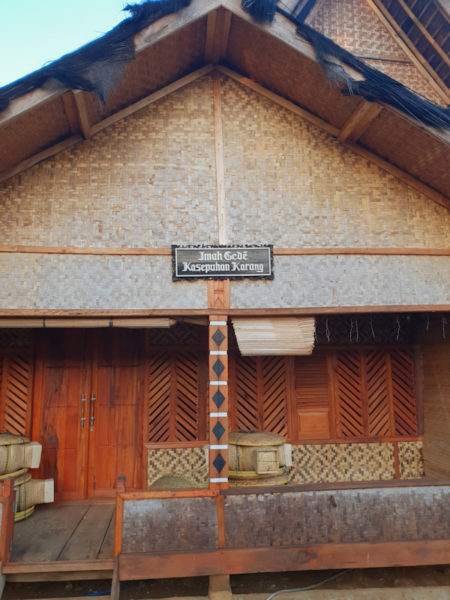
With these protracted conflicts, the Kasepuhan Karang community has sought legal recognition for its rights as an Indigenous People to its customary territories, to enable them to utilize their customary areas and the natural resources they contain. In 2013, as a result of the advocacy of a number of civil society organizations and other friends of the Indigenous People, these claims were recognized through the promulgation of a decree by the district head concerning the recognition of the Indigenous Peoples in the Banten Kidul customary lands. This was followed in 2015 by the promulgation of a regional regulation that recognized their claims to 512 areas of land in the district of Lebak (Perda No. 8, 2015), including many areas of land claimed by the Kasepuhan Karang community. As a result of this, the community acquired legal standing to apply to the Ministry of Forestry and the Environment (KLHK) for the recognition of its rights to its customary forest, based on the Constitutional Court’s Decision No. 35/2012, which drew a clear distinction between Customary Forests and State Forests. At the end of 2016, as a result of the determination by the Minister for Forestry and the Environment, the Indigenous community’s rights to 486 hectares of land was recognized, although this was significantly less than the 797 hectares that the community claimed.
In 2017, the community established a cooperative, Jagaraksa Mandiri Cooperative, to facilitate the management of the customary forests in the new legal context, as well as to provide services related to the storage of agricultural produce, including grain. A unique feature of this cooperative is that it is entirely managed by women. It provides loans with payments corresponding with harvests, or a deposit may be made from a portion of the cultivated crops. The role of women in the management of this cooperative relates to the traditional conception of women’s role in the management of natural resources in the customary lands, where they often fulfill many of the same functions as men, including hard agricultural labor. As a result of their active involvement, women have a great body of knowledge in the cultivation of crops and collection of forest products, particularly in selection of seeds and use of plants for medicine.
The cooperative also has an active role in advocating for community tenure rights. Despite the need to build their capacity to develop the local economy, there is also a strong need to build awareness regarding the change of status of the land, as many stakeholders and office bearers including park managers and local governments remain unaware of the implications of this change.
[1] Based on an article by Nia Ramdhaniaty and Rojak Nurhawan published in WGII. (2021). The long struggle of Indonesia’s Indigenous Peoples for conservation and living space: Fifteen stories of Indigenous Peoples’ and community conserved areas and territories (ICCAs) in Indonesia.
